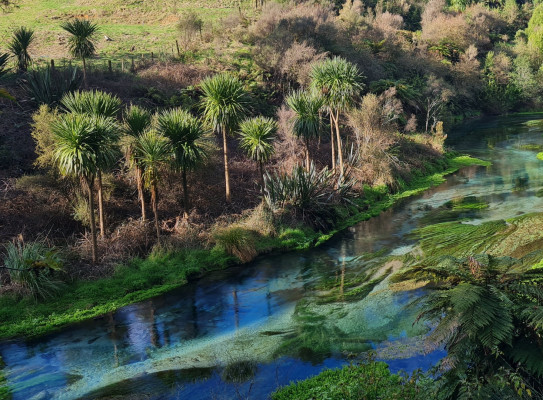Study takes national overview of nitrates in freshwater

A GNS study has uncovered some surprising results about nitrates in freshwater across New Zealand by analysing multi-year datasets.
GNS has been monitoring, analysing and collecting groundwater and surface water nitrate data for many years as part of our National Isotope Monitoring research to understand the sources of nitrates in freshwater.
GNS Science senior scientist, Karyne Rogers we wanted to know if some regions had higher nitrates in their freshwater sources than others.
“Freshwater is under threat from nitrate contamination and as leading experts in groundwater research in New Zealand, we need to ensure we are collecting data like this. This paper presents our nationally significant 10-year dataset to share with researchers, public and monitoring agencies.
Overall, we found some regions in New Zealand are already quite impacted by nitrates in groundwater.
The paper found that almost 60% of freshwater sources analysed had nitrate-N concentrations of more than 0.9 mg/L.
“The current National drinking water standard for nitrate-N is 11.3 mg/l (MAV or maximum acceptable value). However, some overseas studies suggest that the National drinking water standard for nitrate-N should be 1.0 mg/L rather than 11.3 mg/l (MAV or maximum acceptable value). The original 11.3 mg/L value was set many years ago and these researchers feel that 11.3 = is too high. These overseas studies suggest a correlation with colo-rectal cancers for drinking water over 1.0 mg/L nitrate-N. Ecological studies have also shown that above 1.0 mg/L, that the environmental quality of stream habitats are affected and biodiversity begins to decline.”
The study also wanted to find out if nitrate contamination was more of a surface water problem or a groundwater problem.
“We were surprised to see that surface water is less contaminated than groundwater. It is concerning to know that groundwater has much higher median and maximum nitrate-N values than surface water, as groundwater is harder to remediate than surface water. Once groundwater becomes contaminated with nitrates, it can take years or decades for it to decline depending on the age of the groundwater. The median value of 2.9 mg/l nitrate-N is also around ¼ MAV, which already surpasses the 1.0 mg/L proposed threshold to safeguard drinking water quality.”
This is the first national study of nitrate concentrations and their stable isotopes. Stable isotopes provide information about the source and history of the nitrates in the samples i.e., what was the source of the contamination (fertilizers, farming, horticulture, sewage, natural background nitrogen). Data was surveyed from our extensive database (more than 1000 samples collected over 10 years). Councils and researcher partners submit samples to our lab and we also collect location data so we can relate the results back to a specific location. GNS requested permission from all our partners to use the data as it has national significance when it is collected together due to the large numbers of samples taken across New Zealand.
Dr Rogers says GNS would also like to investigate rural drinking water to determine if the same level of nitrates are present in drinking water wells.
A national isotope survey to define the sources of nitrate contamination in New Zealand freshwaters(external link) was published in the Journal of Hydrology. It was co-authored by Rob van der Raaij, Andy Phillips and Mike Stewart.